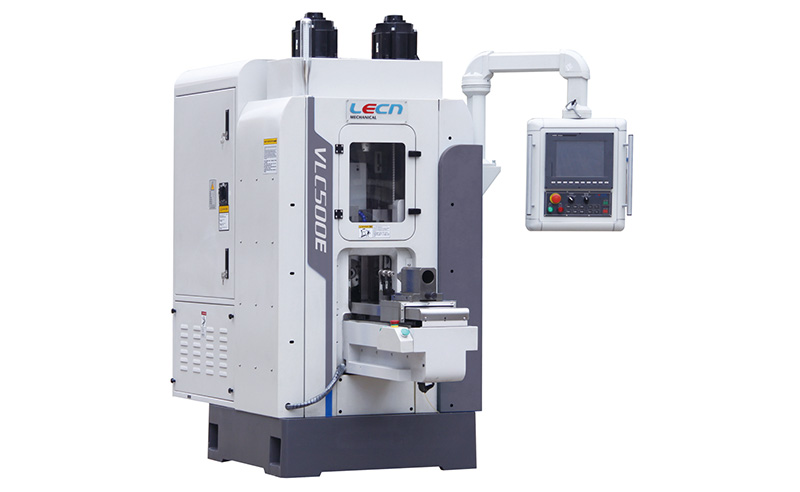Feb. 06, 2024
Machinery
Owing to the vast models and types of plate rolling machines in the market, sometimes it can be daunting to know where to begin when buying a machine that best fits your bending application needs. While cost considerations are essential when deciding the type of plant rolling machine you’ll purchase, you must also pay attention to many other things.

When searching for a plate roll it’s important to know the type of plate rolls available. In a recent article entitled: What type of plate roller fits your production needs we discuss just that. Typically, plate bending rolls come in two different types: single and double-pinch. However, in terms of style and geometry, there are three-roll variable translating, three-roll initial-pinch, three-roll double-pinch, two-roll systems, four-roll plate machines, and three-roll pyramid. When deciding which equipment to buy, it is crucial to match the machine style to its application. So, besides knowing the type or style of the machine you want, you need to consider other things.
The material of the sheet to be rolled is a crucial factor that will help determine the design of the rolling machine you choose. With the strength of today’s steel becoming much higher than ever, the steel plate rolling machine you select should also be able to produce high levels of pressure for it to yield the desired results. As such, there are essential factors that manufacturers need to consider when purchasing a metal sheet roller. These include the yield strength, temper brittleness of the metal, and the use of the sheet. This is essential, primarily due to the transformation of the smelting industry over the last decades.
Essentially, the smaller the diameter of the roll, the more pressure you’ll need and thus the more yield in the rolls you will have. If you want to roll a thick plate with a small diameter, you should pay attention to how the upper roll and how the structure of the plate rolling machine are positioned. This is because these are the two crucial elements that affect the size of the opening and its quality. Theoretically a plate rolling machine can roll material to a diameter of 1.5X the top roll diameter and in some applications even down to 1.3X However this is entirely dependent on the material itself and the capacity of the plate rolling machine you are using.
The support you offer to your metal sheet roller will also determine how effective your rolling processes will be, and this is considered in terms of vertical or horizontal rolling machine. When you choose a plate roll machine that has adequate support, in both side supports and overhead supports it will reduce the workload and save you some valuable labor costs. For instance, when you’re rolling a cylindrical product with a diameter that is 200 times the thickness of the plate, its weight helps it to be bent to the desired size. Therefore an overhead support is required. If there is no adequate support, the ideal diameter can’t be achieved.
Since new plate rolling machines are relatively expensive, you may opt to buy a used machine and, thus, lower the initial investment cost. However, you need to check out the following:
Ensure that all handling options are effective. You should ensure that any motorized loading tables, overhead supports, part ejectors, plate alignment systems, and infeed conveyors are not only functional but also optimal for your specific application.
Inspect the rollers and see if they have been damaged. Although they are hardened, roll surfaces and cone rolling devices can be damaged, especially when narrow pieces are passed through them. Damage can occur either to scoring the surfaces which will be reprinted in future work, or by bending the roll out of roundness. Severe damage can occur by breaking the roll ends over excessive over-tonnage applications..
You also need to ensure that all the safety devices are intact. These include emergency-stop buttons such as low-voltage control circuits, safety tripwires, safety mats, light curtains and detached operator consoles.
Check whether welding has been done on the plate roller. Some welders consider it time-saving to weld materials on top of the roller, rather than take the rolled items to a second station. Although this may be convenient, it may damage electrical systems and controls with hot weld splatter. It is vitally essential to ensure that the machine you are buying was used carefully if any welding occurred, as some of its controls and electrical systems may be faulty or on the verge of being damaged.
LECN as a professional rolling machine manufacturer, can provide you with vertical plate rolling machines as well as horizontal plate rolling machines, if there are other customised requirements, you can also contact us
Related links:Previous: What is the difference between plate and frame filter press and chamber press?
Next: Unlocking Purity: The Arsenic Reduction Furnace in Water Treatment
Related Articles
If you are interested in sending in a Guest Blogger Submission,welcome to write for us!
All Comments ( 0 )